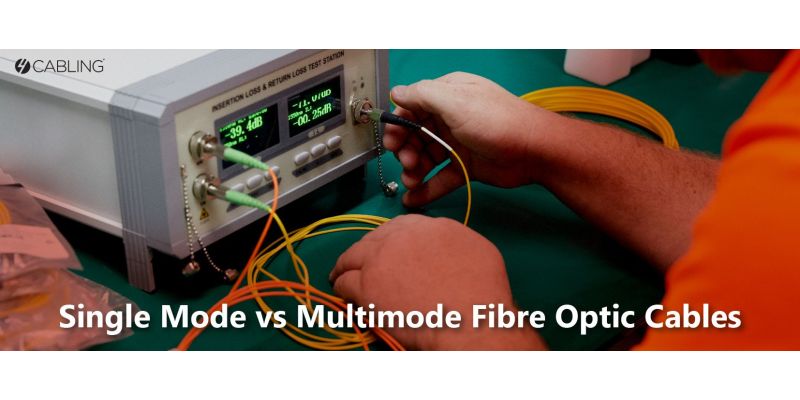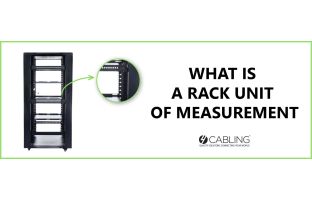Single-mode vs multimode fibre cables: what’s the difference?
Single-mode fibre and multimode fibre cables are used for a huge range of everyday applications. They’re both essential tools for data transfer – but they’re not interchangeable either, and that’s where confusion can creep in. In turn, the choice of whether to opt for single-mode or multimode can be quite difficult at times.
One thing we will clear up straight away is that one isn’t necessarily “better” than the other. Both have distinct strengths and shortcomings. So really, it comes down to which is right for a given application.
In this blog, we’ll take a look at some of the essential things you need to know about single-mode fibre cable and multimode cables. From performance to design and construction to cost, we’ll break down the key things you need to know before deciding on a cable type.
Single-mode vs multimode fibre cable performance
When you’re assessing performance, there are three main factors that come into play – the cable’s bandwidth, its light source and wavelength and the distance you need to transfer data across.
Bandwidth
Due to the way they transmit light, single-mode cables theoretically have an uncapped bandwidth speed. For multimode, though, the current maximum bandwidth is 28000MHz*km when using an OM5 fibre.
For the everyday internet user or office employee, the difference between bandwidth from single-mode and multimode is likely to be subtle. The data rate isn’t likely to be substantially affected, particularly if they don’t have top-of-the-line devices.
However, if you’re looking at long-distance or high-bandwidth industrial-scale applications, this can make a substantial difference.
Light source and wavelength
Without getting too heavily into a physics lesson, data cables essentially work by sending light sources down their length from point A to point B.
In the case of a single-mode fibre cable, it’s being sent “directly” – there’s only one tunnel for it to head down, so it’s less likely to be affected by attenuation.
Conversely, a multimode optical fibre cable is subject to modal dispersion. Multiple sources of information are being sent at once from Point A, and they’re effectively bouncing around in the tunnel on the way to Point B. They don’t all arrive at the same time, and they’re more heavily affected by attenuation along the journey.
Distance
When you’re transferring data over longer distances, single-mode tends to come out in front. This is because a single-mode cable can support a singular, brighter light source. This means it isn’t subject to attenuation in the same way that a signal coming via a multimode cable might be.
At a certain point, a multimode signal just fizzles out. This is why single-mode fibre cable tends to be used for industrial-scale projects – for example, undersea data cables.
But if you’re just talking short distances like a home or small office – well, multimode cables can be a highly effective option, and potentially save you some cash too.
Single-mode vs multimode fibre cable build and design
Core diameter
Single-mode fibre cores are tiny! They’re only 9 micrometres – less than a tenth of the width of a human hair.
A multimode fibre cable core is a bit thicker – about half the width of a human hair at 50 micrometres.
Now, it’s important to note that you can’t tell the difference between single-mode fibre cable and multimode optical fibre with the naked eye. They’re just too small – and they also have cladding around them that makes them look quite similar.
The best way to tell them apart is via their jacket colour.
Colour
Single-mode fibre cores are tiny! They’re only 9 micrometres – less than a tenth of the width of a human hair.
A multimode fibre cable core is a bit thicker – about half the width of a human hair at 50 micrometres.
Now, it’s important to note that you can’t tell the difference between single-mode fibre cable and multimode optical fibre with the naked eye. They’re just too small – and they also have cladding around them that makes them look quite similar.
The best way to tell them apart is via their jacket colour.
Single-mode vs multimode fibre cable cost
Single-mode fibre cores are tiny! They’re only 9 micrometres – less than a tenth of the width of a human hair.
A multimode fibre cable core is a bit thicker – about half the width of a human hair at 50 micrometres.
Now, it’s important to note that you can’t tell the difference between single-mode fibre cable and multimode optical fibre with the naked eye. They’re just too small – and they also have cladding around them that makes them look quite similar.
The best way to tell them apart is via their jacket colour.
Optical transceiver cost
One of the reasons multimode has taken off so well as a format is because multimode transceivers tend to be 2-3 times cheaper than single-mode transceivers.
System cost
Broadly speaking, the cost of a single-mode system tends to be substantially higher, due to the greater expense of equipment, installation and configuration involved.
But for professional settings like data centres or large-scale, long-distance projects, the investment may be necessary. It ultimately comes down to the requirements of the individual project.
Explore the full range of single-mode fibre and multimode fibre here at 4 Cabling
Here at 4Cabling, we stock an extensive range of fibre optic cables. You’ll discover a huge selection of single-mode fibre patch leads and multimode solutions (including OM1 fibre and OM4 fibre) right here on the website.
To learn more, get in touch with us today. We’re here to help with all of your cabling questions.







